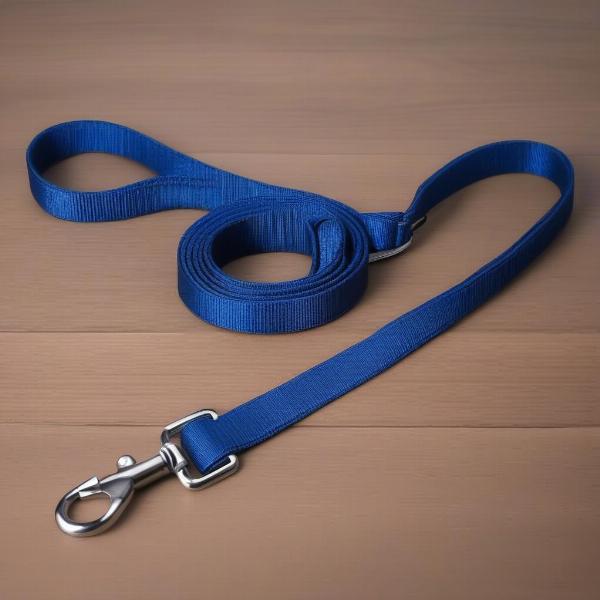A dominant dog leash, often misunderstood, isn’t about asserting control over your dog, but about providing clear communication and guidance, ensuring both their safety and the safety of others. It’s about choosing a leash that helps you manage your dog’s strength and energy, particularly during walks, training, or in stimulating environments. This article will guide you through the different types of leashes suitable for dominant dogs, helping you make an informed decision based on your dog’s specific needs and your handling skills.
Understanding what constitutes a “dominant” dog is crucial. Dominance isn’t an inherent personality trait, but rather a relational dynamic, often displayed through specific behaviors like pulling on the leash, lunging at other dogs, or ignoring commands. These behaviors often stem from excitement, fear, or lack of proper training, rather than a desire to dominate. Therefore, choosing the right leash is just one piece of the puzzle; consistent training and clear communication are equally vital.
Different Leash Types for Dominant Dogs
Several leash types can be beneficial for managing a dog displaying dominant behaviors. The key is to choose one that suits both your dog’s size, strength, and the specific challenges you’re facing.
Standard Leashes
While standard leashes might suffice for calm, well-trained dogs, they often prove inadequate for dogs prone to pulling or lunging. For stronger dogs, a thicker, more durable standard leash made of nylon or leather can be a good starting point.
 Standard Leash for Dominant Dogs
Standard Leash for Dominant Dogs
Slip Leads
Slip leads, also known as training leads, can be useful for short-term control and training. However, they should be used with caution and proper guidance, as incorrect usage can cause discomfort or even injury to your dog’s neck.
Front-Clip Harnesses
Front-clip harnesses discourage pulling by gently steering your dog back towards you when they strain on the leash. This can be particularly helpful for dogs who are reactive to other dogs or distractions.
Head Halters
Head halters provide more control over your dog’s head and direction, making them a good option for dogs who tend to lunge or pull aggressively. They work on the principle of “where the head goes, the body follows.”
Long Lines
Long lines can be beneficial for recall training and allowing your dog more freedom while still maintaining a level of control. However, they should be used in safe, open spaces away from traffic and other hazards.
Training and Consistency are Key
Remember, choosing the right dominant dog leash is only the first step. Consistent training, positive reinforcement, and clear communication are essential for addressing the underlying causes of dominant behaviors.
“Choosing the correct leash is like selecting the right tool for a job. A head halter might be suitable for a dog that lunges, but a front-clip harness might be better for a dog that simply pulls,” says renowned dog trainer, Sarah Miller, CPDT-KA.
Which Leash is Right for Your Dog?
The ideal leash depends on your individual dog’s behavior, size, and strength, as well as your comfort level and handling skills. Consulting with a professional dog trainer or behaviorist can help you identify the best option for your specific situation.
“Don’t be afraid to experiment with different leash types to find what works best for you and your dog. What’s most important is finding a leash that allows you to safely and effectively communicate with your dog,” adds Emily Carter, Certified Veterinary Technician.
Conclusion
Choosing a dominant dog leash involves careful consideration of your dog’s specific needs and behaviors. Remember, the leash is a tool for communication and guidance, not for punishment or control. Combine the right leash with consistent training, positive reinforcement, and clear communication for a harmonious relationship with your dog.
FAQ
- What is a dominant dog leash? A dominant dog leash isn’t a specific type of leash, but rather a leash chosen to help manage a dog displaying dominant behaviors like pulling or lunging.
- What are some good leash options for dominant dogs? Front-clip harnesses, head halters, and sturdy standard leashes are some options to consider.
- Is a slip lead good for a dominant dog? Slip leads can be useful for training, but should be used with caution and proper guidance.
- Is training necessary with a dominant dog leash? Yes, training is essential for addressing the underlying causes of dominant behaviors.
- What’s the most important thing to consider when choosing a leash? Your dog’s individual behavior, size, and strength, as well as your comfort level and handling skills.
- Where can I find more information about dog training? Consult with a professional dog trainer or behaviorist for personalized guidance.
- What if I’ve tried different leashes and nothing seems to work? A professional trainer can offer personalized recommendations and address any specific challenges.
Related Articles:
About ILM Dog:
ILM Dog provides expert advice and resources on all aspects of dog care, from breed selection and health to training, nutrition, grooming, and accessories. We are committed to helping you build a strong and loving bond with your canine companion. For expert advice on dog breeds, training, and healthcare, contact us via email at [email protected] or call us at +44 20-3965-8624.